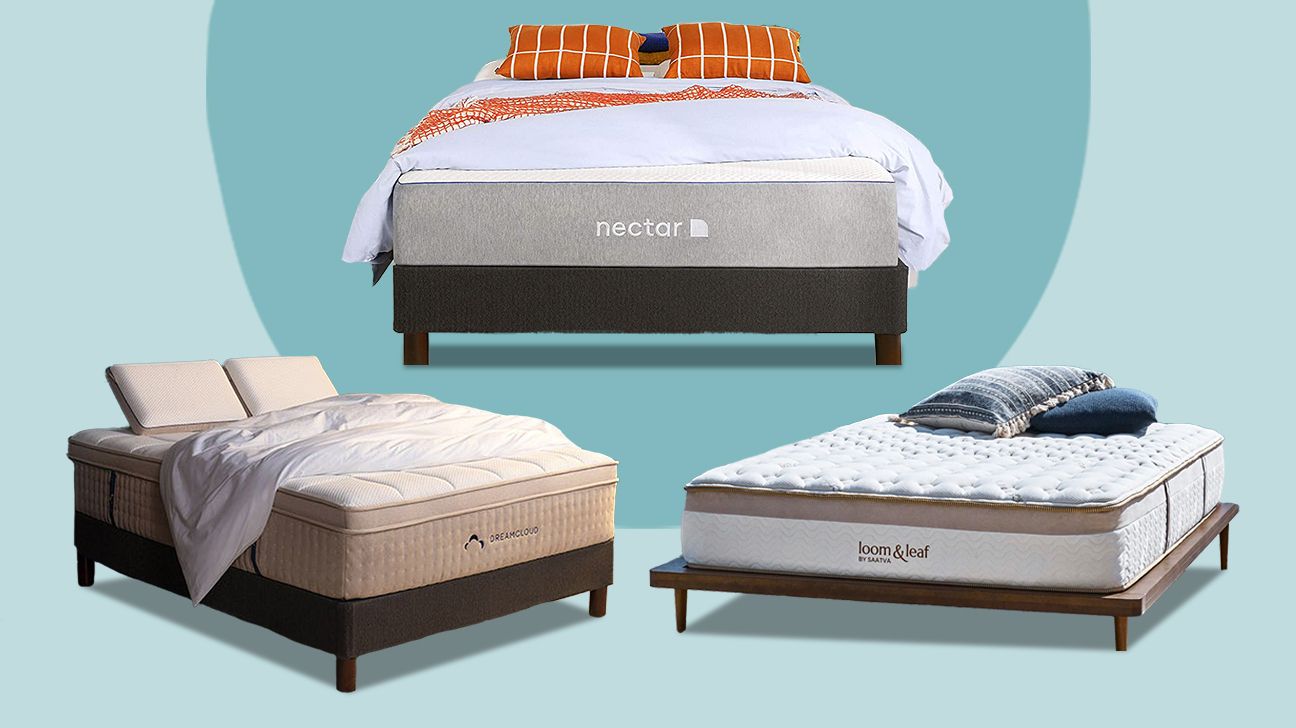Side sleepers may benefit from a mattress that has ample cushioning and support for your spine. We’ve rounded up some options to get you started on your search.
Side sleeping may help keep your spine in a more natural alignment
To make the most out of side sleeping, your mattress needs the right balance of support and cushioning, which varies from person to person.
Check out our picks of mattresses for side sleepers that range in materials, features, and more.
There are all sorts of considerations that go into finding a good mattress. To compile our list of the best mattresses for side sleepers, we looked for materials that help encourage proper spinal alignment.
We also prioritized standards and certifications that indicated the mattresses’ overall safety and quality. We checked for reasonable warranties and return policies, and we scrutinized customer reviews:
- Support the spine with less pressure: The mattresses on this list provide contouring support and pressure point relief for side sleeping comfort.
- Less foam odor: Each foam mattress is made from foam that’s CertiPUR-US certified, so you can expect less of that off-gassing smell.
- Manufacturer warranties: We looked for transparent manufacturers that offer at-home sleep trials and warranties with purchase.
- Customer feedback: We read customer reviews and chose mattresses with significantly more raves than complaints of any kind.
- Return policy: We also looked for mattresses with free or inexpensive returns through the manufacturer or online store.
Want a better night’s sleep?
If you sleep on your side, certain accessories may help keep you comfortable. For example, some pillows are specifically for sleepers who need neck and back pain relief.
If your current mattress isn’t suitable for sleeping on your side and a new mattress is out of your budget, you can try a mattress topper to refresh your current mattress.
When done with the proper body alignment, sleeping on your side can reduce joint and low back pain as well as chronic pain.
Your gut health may improve if you’re a side sleeper too. This is the optimal position for your digestive system and may lead to a decrease in gastrointestinal issues like heartburn, constipation, and bloating.
Another benefit of sleeping on your side is reduced snoring, a common symptom of obstructive sleep apnea. This condition creates disruptions in breathing, which can lead to complications such as diabetes, heart attack, and cognitive issues.
One notable drawback to sleeping on your side is that it can increase your risk of shoulder pain. Whether you’re on your left or right side, the corresponding shoulder can collapse into the mattress as well as up toward your neck, creating misalignment and pain the next morning.
Your body may prefer a bit of variety throughout the night to prevent pain in other areas of your body. This could involve starting on one side and then shifting over to the other.
It’s also important to be aware of where your head is resting on the pillow. Tucking the chin too far toward the chest or bending the head too far backward may lead to neck pain.
When shopping for a mattress, keep in mind that firmness and support aren’t the same thing.
Mattresses come in several firmness levels, from extremely soft to extremely firm. These levels indicate how hard or soft the mattress will feel to you — not how supportive it will be to your spine.
Support refers to how efficiently a mattress maintains spinal alignment. A supportive mattress provides pressure point relief while keeping your spine aligned and in its proper position, even while side sleeping.
Best types of mattresses for side sleepers
- Hybrid mattresses: a combination of innerspring and foam that contours to your body to allow your spine to naturally align
- Memory foam mattresses: offer excellent pressure relief and even weight distribution
- Latex mattresses: allow for proper spinal alignment and provide relief from pressure points
- Spring mattresses: allow for support throughout the mattress, especially near the edges, and don’t sink in the way foam mattresses do
Ideally, you want to choose a mattress that has a medium level of firmness. Medium-soft to medium firmness provides pressure relief in the shoulders and hips and just enough support without feeling too stiff. This level of firmness helps you maintain proper spinal alignment.
However, it’s important to keep your weight in mind when shopping. People under 130 pounds usually need a softer mattress, while people over 230 pounds require firmer support.
Both memory foam and hybrid mattresses can be a good choice for side sleepers. Memory foam is an ideal material because of its close contour and pressure relief, while hybrid mattresses tend to offer better support.
A hybrid mattress that includes memory foam in the comfort layer may offer side sleepers the best of both worlds.
Most side sleepers benefit from medium-soft to medium-firm mattresses, but side sleepers with back pain will likely do best with something in the medium-firm range. Keep in mind that individual body weights affect how firm a mattress feels. The more weight you have, the softer a mattress will feel.
Most companies offer an in-home sleep trial for their mattresses, which can help you determine what level of firmness works best for you.
If you’re a side sleeper, finding a mattress that supports spinal alignment while cushioning your shoulders and neck is important.
There are many mattresses available across a range of prices that may be good choices for side sleepers.







